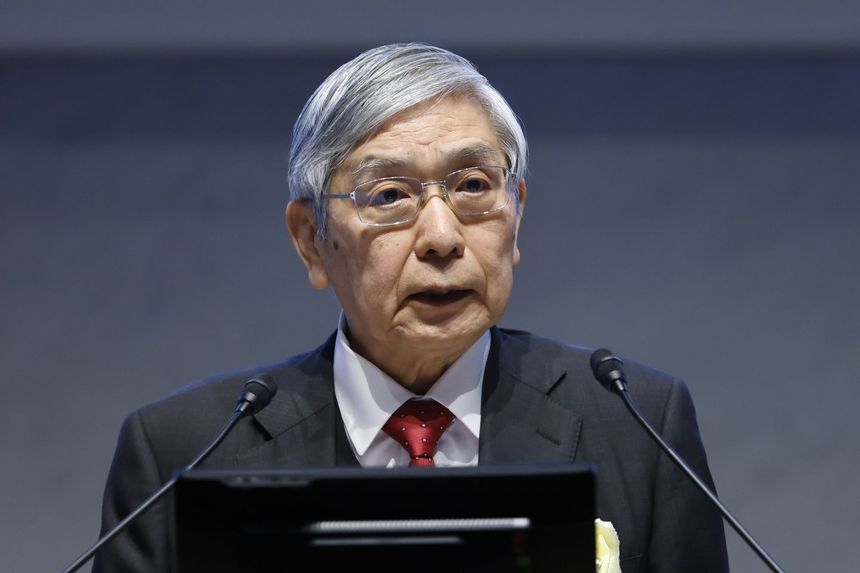Bank of Japan Governor Haruhiko Kuroda
Photo:
Kiyoshi Ota/Bloomberg News
meets on monetary policy this week, and it could be an important date on the global economic calendar. Investors are trying to drag this most aggressive of central banks back toward something resembling normal monetary policy, and don’t assume the rest of the world will be immune to the consequences.
Investors expect Governor
Haruhiko Kuroda
to take another step back from the BOJ’s yield-curve-control policy, and those investors are forcing his hand. Under this mechanism, the BOJ commits to buy or sell unlimited quantities of 10-year government bonds to hold the yield below 0.5%. The policy has broken down as investors have challenged the peg in a belief that accelerating inflation would force the BOJ to raise rates.
Mr. Kuroda responded by raising rates after a fashion. On Dec. 20 he raised the upper bound of the peg to 0.5% from 0.25%. That move followed 17 days when the 10-year yield exceeded the ceiling. Some thought the tweak would buy the BOJ several months before markets would test the new peg. In the event, Mr. Kuroda gained three weeks. The BOJ lately has engaged in more bond-buying than ever, to the tune of $74 billion in two days last week.
This can’t go on, if only because the BOJ now owns more than half of all Japanese government bonds (JGBs) in circulation—a central-bank bond portfolio larger than the country’s annual GDP. The policy also is creating ever greater distortions in other bond prices.
Setting a peg for the 10-year yield was supposed to anchor interest rates at other maturities. Instead, it’s creating a “kink” in the yield curve, such that 10-year yields are significantly lower than market-set yields at durations such as eight or nine years. No one can say exactly what effect this will have on banks, borrowers or the economy, because no modern central bank has maintained such a policy under…
Click Here to Read the Full Original Article at RSSOpinion…

